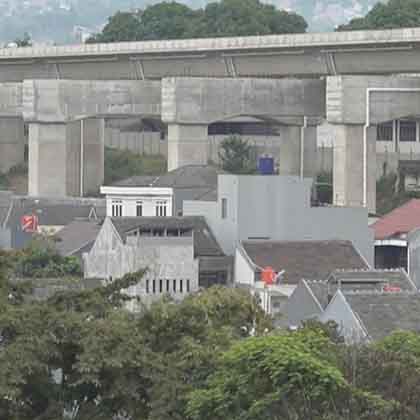Fear, Hope, Disappointment Linked to Indonesia-China Rail Project
China’s Belt Road Initiative promised vastly improved infrastructure to connect people of various developing countries and promote commerce. But aside from widely reported delays, some projects had a hidden cost and unintended local impact.
Transcript:
Every day for the past two years, Heru Sutanto says he has felt anxious. He lives in Padalarang, a city in the Indonesian Province of West Java, situated some 136 kilometers (85 miles) from the nation’s capital, Jakarta.
Heru Sutanto, Padalarang Resident: “This is what I’m really worried about… if it shifts, the roof will also fall… that’s why we don’t use this room, I have two rooms that are not being used for my children’s bedrooms. Rather than being at risk, it’s better to sleep in the living room…”
Sutanto’s house is about 150 meters from the construction of a tunnel. That’s slightly longer than a soccer field. The tunnel is a part of the Jakarta-Bandung high-speed rail project, a landmark project for China’s Belt and Road Initiative. The project aims to connect two of the region’s population centers, Jakarta and Bandung, through high-speed rail.
The housing complex where Sutanto lives is just west of Bandung. The tunnel construction impacts him and more than 100 other families who live in this complex.
Meiki W. Paendong, Environmental Advocate: “The construction process uses blasting techniques so that it has an impact on the damage to their residential houses.”

A housing project in Padalarang, Indonesia, near the construction site of the Jakarta-Bandung high-speed rail project. (Ahadian Utama | VOA)
Residents have tried several times to voice their concerns to officials with the Indonesia-China High-Speed Rail Project, known by their Indonesian acronym KCIC, a consortium formed by Indonesian and Chinese state-owned enterprises. But the residents say the KCIC has not followed up. The consortium also did not respond to VOA’s request for comment.
At the beginning of the project in 2016, the initial cost was $5.5 billion US dollars. 75 percent of that amount was borrowed from the China Development Bank, Indonesian state-owned enterprises took on 15% of the cost, and the rest was provided by the Chinese consortium of state-owned enterprises.
However, costs swelled to more than $6 billion and is expected to increase again to just under $8 billion due to overrun costs according to an official with Indonesia’s Coordinating Ministry of Economic Affairs.
Transportation analysts say, this development has put Indonesian President Joko Widodo’s government in an uncomfortable position.
Darmaningtyas, Transportation Analyst: “The choice for the government is to keep completing it even though the economic consequences will be a lifetime budget burden… if they stopped, it would probably become an abandoned project for life as well.”
Some residents are pushing for the project because it will drastically cut the travel time between Jakarta and Bandung.
Achmad Rasyad lives on the outskirts of Jakarta, and travels to and from Bandung weekly for work.
Achmad Musafa Rasyad, High-Speed Rail Project Supporter: “It normally takes up to 4 hours, but with high-speed train, I hope it can reduce to 1-2 hours.”
But even rail supporters are disappointed by project delays. The high-speed train was to begin operating in 2019, but that has been moved back to 2023.
Back in Padalarang, Sutanto and his neighbors wonder how much longer their homes can withstand the constant drilling.